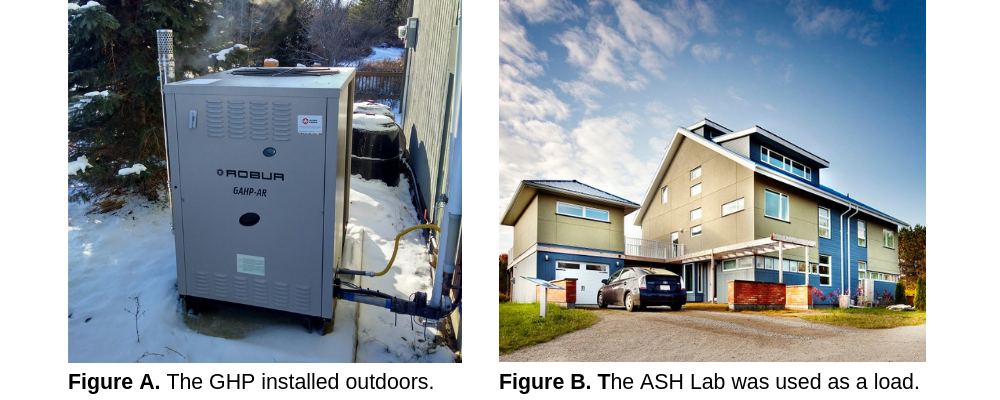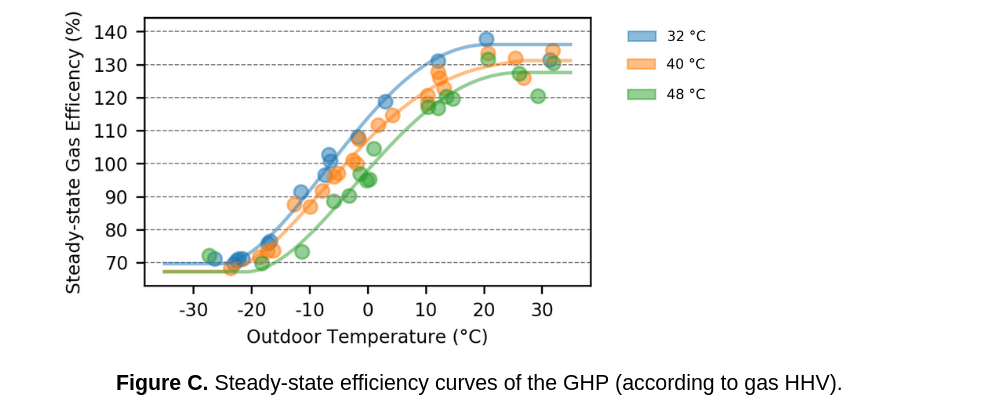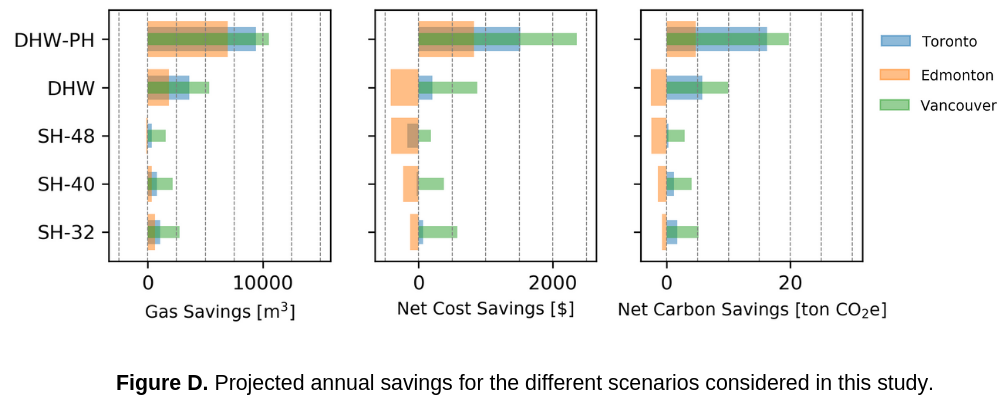Guest blog by Erik Janssen, Analyst, at Sustainable Technologies Evaluation Program (STEP), Toronto and Region Conservation Authority (TRCA)
In our previous guest blog post, we reported on the energy savings resulting from ductless air-source heat pump retrofits. We found that the savings were notable. That was in part due to the fact that electricity is costly and conserving it can generate correspondingly large cost reductions.
Most buildings in Ontario are actually heated with natural gas (referred to just as “gas” from here on). At current rates, gas contains several times more energy than electricity for the same cost. For an electric heat pump to reduce costs over conventional gas heating (in heating dominant applications), it would need to have an extremely high efficiency. Most electric heat pumps would not do it.
In this context, there exists an inverse relationship between cost and carbon. Reducing electricity can notably reduce costs but will not generate substantial carbon savings in jurisdictions that have a relatively clean grid (like Ontario). On the other hand, reducing gas can significantly reduce carbon emissions but may not save much cost because gas is a low-cost fuel.
To generate substantial reductions for both cost and carbon you need a technology, and an application, that can save a huge amount of gas. That’s how STEP got interested in gas absorption heat pumps…
In another recently completed project, also co-funded by TAF, our team evaluated a gas-driven air-source heat pump (GHP) alongside project partners Ryerson University, Enbridge, Union Gas Ltd. and The Ontario Climate Consortium (OCC). Additional base funding for STEP projects is also provided by the City of Toronto, Region of Peel, and York Region.
The unit we tested provided both heating and cooling, but a heating-only version is also available. This GHP is installed outdoors. It accepts fluid coming from a building and then supplies a heated fluid back to a building. It’s heating capacity makes it well-suited to large homes, multi-unit residential and industrial-commercial-institutional sectors.
We installed the GHP at our Archetype Sustainable House (ASH) Lab in Vaughan, ON. The ASH Lab is uniquely equipped with a state-of-the-art control and data acquisition system and has been used in dozens of academic and industry research projects. It allowed us to fully map out, in detail, the impact of different operating parameters on performance.

Our experimental map of heating efficiency for different outdoor ambient temperatures and inlet fluid temperatures (shown as different colours) is below. Without getting too technical, the general trend is that the heat pump gets more efficient for warmer outdoor temperatures and cooler inlet fluid temperatures. One takeaway is that there is no single value of efficiency – it depends on the operating conditions.

To better understand how operating conditions would affect savings versus a high-efficiency boiler in actual applications, we needed to do some further calculations. We used weather data for Toronto, Edmonton and Vancouver, and then selected building load curves to represent different applications. This was then applied to the performance curves to generate projected savings, although note that these calculations were high-level and represent the upper limit of potential performance.

We considered two main types of application: space heating (SH) and domestic how water (DHW). DHW pre-heating (DHW-PH) is an ideal application. It exploits many factors contributing to a high-efficiency: lower inlet fluid temperatures, warmer outdoor conditions, and greater operating hours. The incremental capital cost for the GHP is currently high but our results suggest that a simple payback under 10 years (or better) is feasible for the highest performing applications and locations.
It was interesting that some applications were projected to produce net gains in cost rather than savings. There are two reasons: (1) very cold ambient conditions can result in the GHP annual efficiency actually being lower than a boiler; and (2) the unit consumes ~ 1kW of electricity, introducing an additional cost that, in some cases, is not fully offset by the gas savings.
We caution that the results are sensitive to the utility rates. Prospective system owners are encouraged to consider the impacts of their rates, and any applicable incentives, and use building energy modelling to estimate savings for specific buildings.
We also found that the low cooling mode efficiency would result in notably greater emissions when compared to electric cooling and that gas cooling would not produce a cost savings in many applications. As a cost-effective low-carbon technology, we suggest that the non-reversible version of the technology is preferred in Canada.
Through this project, we learned that gas absorption heat pumps are a promising technology for carbon reduction. While it is not a cost-effective replacement for conventional gas heating technologies in every instance, DHW applications in particular have strong potential for notable operational cost and carbon reductions. For the next steps, we need to see more demonstrations in actual buildings and explore other types of gas heat pump technology.
For more information
- The report and technical paper are online
- Follow STEP on social media: Twitter and LinkedIn
- Connect with Erik directly via LinkedIn or email
STEP is a collaborative non-profit research initiative within the TRCA. Among other priorities, STEP leverages partnerships with municipalities, provincial and federal government bodies, utilities, non-profits, academic institutions and private companies, to pilot and evaluate emerging low-carbon technologies with the aim of providing real-world data that informs effective technological responses to climate change. STEP team members are scientific monitoring and M & V experts, particularly as it pertains to renewable energy, HVAC and smart-grid. Its research projects are conducted either in one of our own state-of-the-art Living Labs or off-site in real-world buildings.
TAF provided multi-year funding to the TRCA in 2016 for this project.
